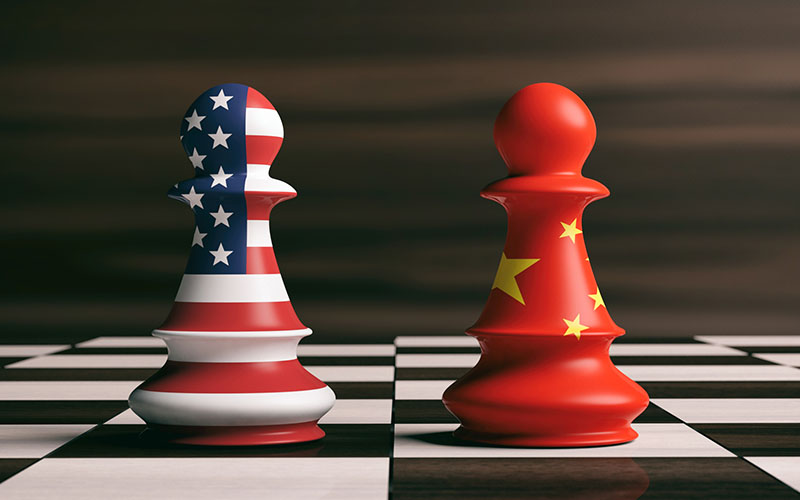With U.S.-China ‘Phase One’ deal done, there are lots of moving parts going forward
While the ink may now be dry from the United States-China Phase One trade deal coming to fruition on January 15, there are more than a few things to watch out for and keep in mind going forward.
While the ink may now be dry from the United States-China Phase One trade deal coming to fruition on January 15, there are more than a few things to watch out for and keep in mind going forward.
As previously reported, under the terms of the Phase One deal China will purchase at least an additional $200 billion worth of U.S. farm products and other goods and services over two years, over a baseline of $186 billion in purchases in 2017.
From a logistics and supply chain perspective, there is a lot more to come, based on a recent conversation I had with Chris Rogers, research director for global trade intelligence firm Panjiva.
When I spoke with Rogers to get his take on the Phase One deal soon after the deal was brokered, he told me the following: “The U.S.-China Phase One deal does not really roll back any tariffs. So any sourcing decisions or logistics routing choices that were made based on tariffs in fourth quarter are pretty much in the same place, whether a tariff was 15% or 7.5% or 25%, it is really not making a huge difference in the long-term decisions being made. I don’t think there will be a significant shift back to China, in terms of imports, in 2020.”
These are significant points, to be sure. And Rogers laid out these five additional takeaways in a research report he authored, which noted:
- The U.S. has given up almost nothing
- China has made some massive commitments that rely more on manufactured goods and services than agricultural and energy - we're concerned about whether they can be met.
- While there are changes to some China tech policies, phase 2 is unlikely to make much progress in addressing the two countries' rivalry
- There are not enough details on the timing or sanctions for enforcement of non-compliance to wholly remove the risk of further tariffs.
- 2020 Dems rather than the WTO may be the big external force that drives developments from here.
These points, coupled with his previous analysis, provided a sound platform for a series of questions I asked him about Phase One, in terms of what it all means for logistics and supply chain stakeholders.
Before digging into his other observations and takeaways, Rogers said that the trade and tariff developments in recent years feels like a roller coaster ride. And there is a chance that even with Phase One now a done deal, that ride will likely continue.
“For logistics and supply chain stakeholders, the question is: will this deal stick [and] will China abide by the terms and will the Trump administration be patient or seek immediate delivery on the plans or will there be a return to tariff increases?” Rogers noted. “First, the purchase agreements are easy to track but are difficult to deliver. There are the product lines that are going to be tracked and there are the magnitudes observers are looking for so everyone can kind of track that.”
A big part of the Phase One deal’s parameters directly relies on a significant increase in manufacturing related imports from the U.S. to Chine to the tune of $75 billion, Rogers noted, whereas other tariffed goods—like soy beans, oil, of liquefied natural gas—are relatively easy for Chinese-based companies to buy from the U.S. instead of another country or for U.S. farmers to sell to China and not somewhere else.
“But for manufactured goods—for everything from semiconductors to cars to parts that go into an aircraft—those are typically decisions made by private companies and are decisions where the Chinese don’t necessarily have a lot of control,” Rogers cautioned. “So when you look at that $200 billion number, $80 billion is coming from an increase in the exporting of manufactured goods and that is a big ask. In the past 12 months, U.S. exports of those products are about $50 billion. And the plan calls for that to increase to $120 billion in one year and that is just incredible considering that number has been around $45 billion-to-$50 billion for the past five years.”
Another key aspect is services with $55 billion in Phase One related to services like banking, insurance and cloud services, among others.
Rogers explained that these services are largely provided by private companies, noting it represents a 140% increase, which he described as “a lot,” looking like it could be hard to meet.
“The longer that number is not achieved, the higher the risk is that it all falls to pieces and that can happen pretty quickly if China does not deliver,” said Rogers. “But the U.S. or China can remove themselves from the deal in just one week’s time…if the wheels are going to come off the wagon, they are going to come off quick.”
Rogers is not saying that things are in danger of falling apart a week after Phase One was signed, but that certain things need to occur for things to come to fruition. Phase Two will come next, and the Chinese have made it clear that until tariffs are officially removed the deal is not truly done. It is tough to argue with that, and it makes the coming months on the global trade front both interesting and tense all at once.













